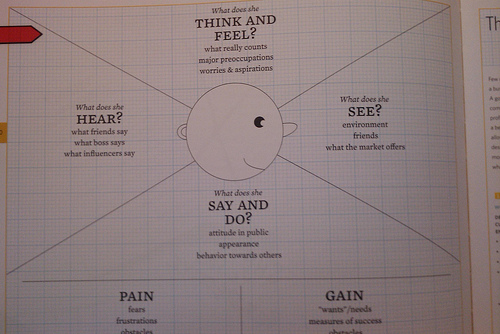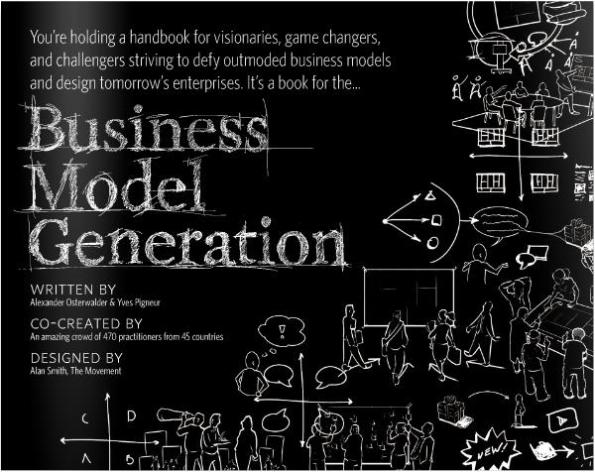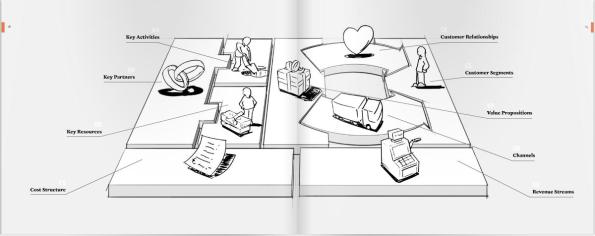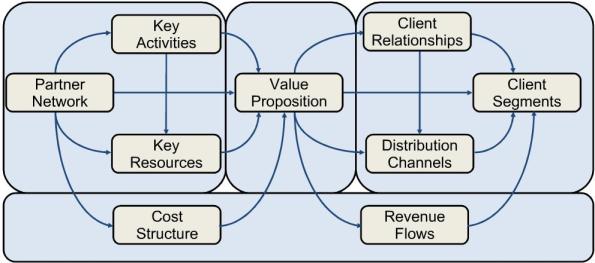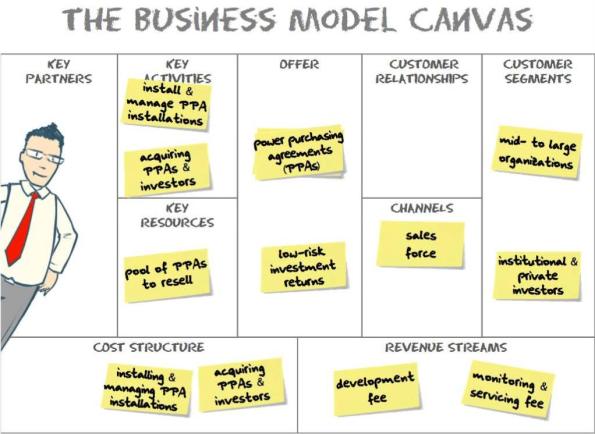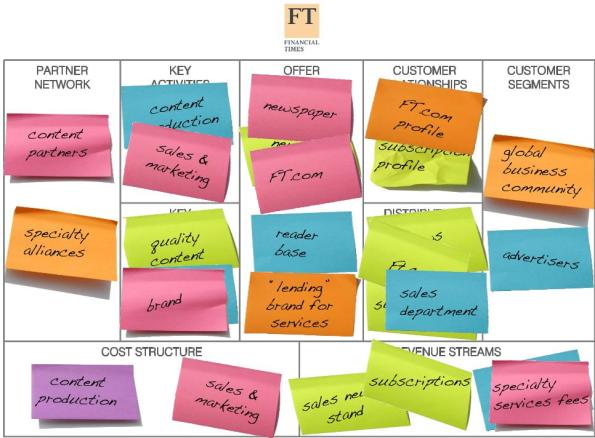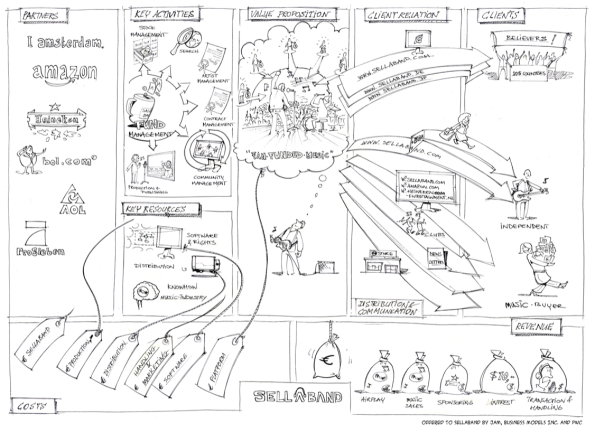Archive
Developing deep insight into your Customers – XPLANE’s Empathy Maps
OK, more thoughts on Alexander Osterwalder‘s new book Business Model Generation – see my previous related blog posts here and here.
The topic of this post is an innovative technique for developing a “deep” understanding of your customers – their environment, behavior, concerns, and aspirations – called the Empathy Map. The Empathy Map is presented by Osterwalder in his book, but was originally developed by Dave Gray at XPLANE .
Introducing the Empathy Map
Here’s a snapshot of what the Empathy Map looks like:
The Empathy Map is both a framework and a technique, and it’s typically developed collaboratively by a diverse team by placing sticky notes on a wall. If you’d like to download a template of this poster, you can do so here.
Developing a deeper understanding of your customers by understanding:
- Who they are in their world
- Where they spend their time
- Who their friends are
- Whose opinions influence them
- What they SAY their deepest aspirations and beliefs are
- What feelings and beliefs ACTUALLY guide their behavior
You get the idea. Also, pay special attention to potential conflicts between what a customer might say, and what they may truly think or feel.
Empathy Map in Action
The image below is an example Empathy Map taken from the Business Model Generation book that models the customer profile of a CIO.
The motivation, in this instance, for creating the CIO profile is to understand the key factors that weigh on their decision to renew Microsoft Office product licensing agreements.
The details are not so important, and they’re a bit hard to read, but the important points are:
- The value of formally modelling a customer’s beliefs and motivations in their world
- To assemble a diverse group of stakeholders to develop this profile of the customer
- And to use this profile to gain insight into new Value Propositions that speak to a customer’s most important problems, values, aspirations, beliefs.
Osterwalder has a nice blog post titled The Power of Immersion and Visual Thinking, where he describes a workshop he hosted with Dutch company JAM that led a group through the Empathy Map exercise. It’s a nice post.
In conclusion …
So that’s the Empathy Map – a simple and easy way to gain deeper insight into your customers to develop new value propositions and products and services.
glenn
Business Model Generation – deep thoughts from Alexander Osterwalder
A couple days ago I blogged about Alexander Osterwalder‘s fantastic new book Business Model Generation. I’m about half way through the book, just beginning the section on Ideation, the second technique introduced in the Design part of the book … when the words on the page just stopped me dead in my tracks, in as much as they struck right to the heart of the matter. Here’s the passage:
Mapping an existing business model is one thing, designing a new and innovative business model is another. What’s needed is a creative process for generating a large number of business model ideas and successfully isolating the best ones. This process is called ideation.
Wait, here’s the punchline …
Business model innovation is not about looking back, because the past indicates little about what is possible in terms of future business models. Business model innovation is not about looking to competitors, since business model innovation is not about copying or benchmarking, but about creating new mechanisms to create value and derive revenues. Rather, business model innovation is about challenging orthodoxies to design original models that meet unsatisfied, new, or hidden customer demands.
Wonderful! That’s really it isn’t it.
Business Model Innovation – Alexander Osterwalder
Business Model Generation – Introduction
Introduction
So I recently came across a book on Amazon that immediately piqued my interest. That book is Business Model Generation, by Alexander Osterwalder. This is one of the most unique and interesting books and approaches I’ve come across in a long while. Here’s the front cover of the book:
Business Model Generation is a recent addition to the long line of books on business model innovation in the face of disruptive business change. Geoffrey Moore, Clayton Christensen, Michael Porter, the Balanced Scorecard and Strategy Maps, and others are part of this long tradition. But this book is very special IMO. And the primary reason for its uniqueness is its use of visual thinking.
I’ve long been a fan of using visual thinking to tell stories and convey meaning. Scott McCloud, Dave Gray of XPLANE (now part of the Dachis Group), Dan Roam, Dion Hinchcliffe, Nancy Duarte, Garr Reynolds, and the entire VizThink community have been some of my primary influences. Now I would definitely include Alexander Osterwalder at the top of this list.
Basic Premise of the Book
There are several important premises that underlie this book, IMO (Edit Aug 2/10: Having nearly finished reading the book, I would definitely now update this list. In fact, I will be updating this entire blog post. Will do that over the next day or two.). They are:
- The scale and speed with which innovative business models are transforming industrial landscapes today is unprecedented
- Designing new business models is extremely difficult
- It is important to be able to describe and communicate a business model in clear, concise, and simple way – and this best way to do this is through visual thinking and communication
- Having a formal method, and a common vocabulary, to describe, collaboratively design, and communicate business models is critical
- Structured, visual models are an important link in bridging strategy and execution
That’s it I think. Those are really the key premises underlying the book. Note that this is just a list I put together, and you won’t find this list specifically in the book. But I think it’s pretty close to the mark.
Business Model Canvas
The Business Model Canvas is the core framework presented in the book for describing and generating new business models. This framework is illustrated in the picture below from the book.
It’s a bit hard to see without clicking on the above picture to enlarge it, but Business Model Canvas has 9 key inter-locking pieces – or building blocks – that, taken together, can describe any business model. These 9 building blocks are:
- The value proposition of what is offered to the market
- The segment(s) of clients that are addressed by the value proposition
- The communication and distribution channels to reach clients and offer them the value proposition
- The relationships established with clients
- The key resources needed to make the business model possible
- The key activities necessary to implement the business model
- The key partners and their motivations to participate in the business model
- The revenue streams generated by the business model (constituting the revenue model)
- The cost structure resulting from the business model
The book covers each of these pieces in some detail. But these “pieces” are not just a list of isolated components. They come together in an inter-locking framework that is illustrated below.
For design geeks out there, here’s a highly interesting and entertaining view of the structure and design of the book – focusing on the Business Model Canvas section – by the book’s Creative Director Alan Smith:
For Smith’s commentary on the design of the Business Model Patterns section, click here.
Working with the Business Model Canvas
When using the Business Model Canvas in a collaborative setting, participants typically work on a wall poster that is organized as shown below:
But the gold in the Business Model Canvas comes from the collaborative discussions and explorations in trying to envision new business models. Typically as mentioned above, participants will work with a wall-sized version of the post, and use post-it notes to flesh out either an existing business model, or possibilities for a new business model. Here’s a simplified version of a possible business model in the solar industry:
This example is not actually from the book, from from Osterwalder’s presentation A Business Model for Solar Energy.
In the ideation phase, this process will be messy, messy. Much messier, for instance, than this highly-simplified model of the Financial Times business model:
And that’s a good thing. 🙂
Using Visual Thinking techniques to illustrate Business Models
Example – Sellaband
Using Post-it notes is a quick and easy way to throw out ideas, and be able to easily and quick move them around on a canvas. However, as Osterwalder discusses in the Design section of his book, Visual Thinking and pictures can convey meaning and relationships in a way that text simply can’t.
As an example, here’s a sketch that JAM did for a young Dutch company Sellaband, that was looking to envision a completely new business model in the music industry – a platform enabling crowd-funding of independent music artists:
Of course, there are numerous subtleties in this diagram that would have been addressed in ideation process, which would require significant elaboration. But that’s the point of the diagram, to simplify the business model to a single picture, that provides a high-level overview of its most fundamental elements.
Additionally, Sellaband created the visual to develop a shared understanding, and to pitch their business model to potential investors. So they would be in a position to elaborate on the visuals in face-to-face meetings.
Telling the Story
The book advises that a powerful way to explain a business model is to tell the story “one image at a time”. It cautions:
Presenting a full description within the Business Model Canvas can overwhelm an audience. It’s better to introduce the model piece by piece … It allows the audience to follow the build-up of the model, and the visuals complement your explanation.
The book describes the 4 steps in telling a visual story as:
- Map your business model
- Draw each business model element
- Define the storyline
- Tell the story
The value of Visual Thinking
Osterwalder elaborates on the value of visual thinking in working with business models:
Visual thinking is indispensable to working with business models. … Because business models are complex concepts composed of various building blocks and their interrelationships, it is difficult to truly understand a model without sketching it out.
A business model really is a system where one element influences the other; it only makes sense as a whole. Capturing that big picture without visualizing it is difficult. In fact, by visually depicting a business model, one turns its tacit assumptions into explicit information.
In summary, visual thinking brings a clarity and coherence to the complex set of elements and relationships inherent in a business model in a way that textual description simply can’t.
Hearing it straight from the Horses mouth …
All well and fine, but it’s always nice to hear someone speak about their approach in person. Probably the best video of Osterwalder presenting his approach is the video below:
The slide deck accompanying this presentation can be found here. Here’s another presentation Osterwalder gave on Business Model Innovation in Melbourne in 2008, with the accompanying slides available here.
Hope you find the approach as compelling as I do.
glenn
